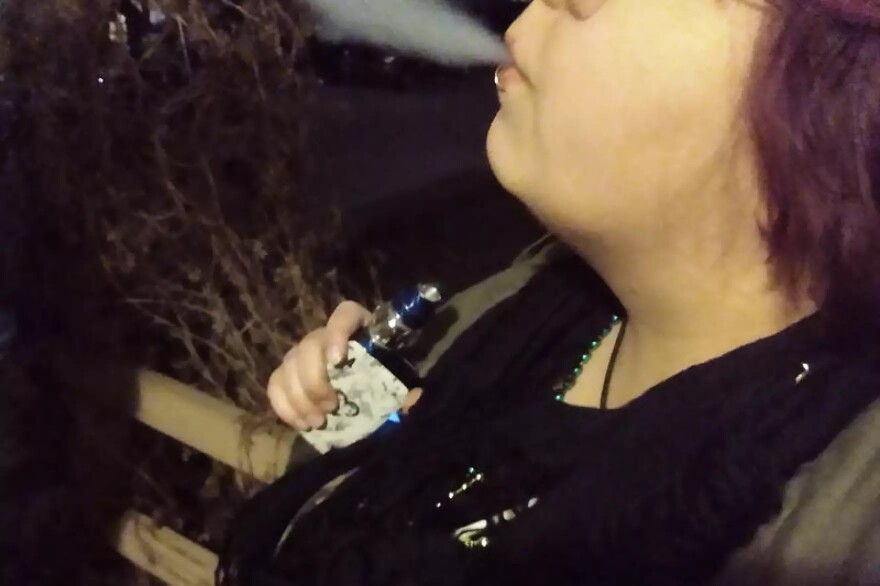Youth tobacco use in Indiana continues to trend downward — largely due to a decrease in e-cigarette use. But a new survey shows the percentage of high school students who tried nicotine pouches more than doubled since 2022.
More than one in 20 high school students reported tobacco use in the prior 30 days — the lowest rate in two decades. Among middle school students, it was about one in 30.
While the national youth tobacco use rate was more than 10 percent, the overall rate in Indiana was 5.8 percent.
Cigarette and e-cigarette use dropped to the lowest rates Indiana has seen since the state started collecting data. The Indiana Department of Health said despite the progress, it is still concerned about flavored tobacco products, frequent e-cigarette use and the rising popularity of oral nicotine pouches.
Nicotine pouches contain high levels of nicotine and are typically available in different flavors. The use of nicotine pouches is still relatively low compared to e-cigarettes, but they are gaining popularity among youth, both in Indiana and nationally. They are the second most popular tobacco product among Indiana students.
The percentage of high school students who reported trying nicotine pouches “significantly increased” from 2.3 percent to 5 percent. Only 1.5 percent reported use in the prior 30 days, a slight increase since 2022.
Cigarette, smokeless tobacco and cigar use have all decreased in recent years. Cigarette and cigar use are at the lowest they’ve been in two decades.
E-cigarettes remain the most popular tobacco product for youth, with one in 20 high school students and one in 40 middle school students reporting use in the prior 30 days. While the rate for middle school students increased slightly over the last two years, the rate for high school students is at 5 percent — the lowest rate on record.
Of students who reported having tried tobacco products, e-cigarettes were most commonly tried first and cigarettes were most commonly tried second.
More than half of middle school students in Indiana reported using flavored nicotine products in the prior 30 days, compared to 75 percent of high school students. The availability of flavors was the most common reason high school students reported using e-cigarettes. According to the report, this is similar to previous years.
About one in four middle school students reported wanting to use a tobacco product within 60 minutes of waking up, which is an indication of nicotine dependence. Among high school students, it was nearly three in 10.
More than 40 percent of students who used tobacco products in the prior 30 days reported they were considering quitting in the next year. About 70 percent of middle school students and about 50 percent of high school students reported they tried to quit in the last year.
State Health Commissioner Dr. Lindsay Weaver said in a statement the decreases in tobacco use are encouraging, but the state will “remain vigilant in addressing nicotine addiction and the appeal of flavored products.”
“I am thankful for the tobacco prevention team and many coalitions who have been addressing tobacco prevention for decades,” Weaver said. “This last year they have had the added assistance of addressing vaping prevention in schools with the local health departments’ school health liaisons, made possible by [Indiana’s public health funding].”
State lawmakers made significant cuts to that funding in the new state budget.
Join the conversation and sign up for the Indiana Two-Way. Text "Indiana" to 765-275-1120. Your comments and questions in response to our weekly text help us find the answers you need on Medicaid and other statewide issues.
Indiana’s “historic” public health funding was scaled back in the final version of the next state budget — going from $100 million to just $40 million for all 92 counties. The last state budget included $225 million for local health departments.
This session, lawmakers had $2 billion less than they originally thought for the next state budget, so the public health funding wasn’t the only thing scaled back or cut entirely.
Miranda Spitznagle, IDOH’s director of Tobacco Prevention and Cessation, said in a statement comprehensive tobacco control programs are essential to reducing youth tobacco use.
“By working together — parents, schools, healthcare providers and community organizations — we can continue protecting young Hoosiers from the harms of commercial tobacco products,” Spitznagle said.
Students who reported attempting to quit using tobacco products largely reported trying to do so “cold turkey.”
The state offers free tobacco cessation resources for youth. Quit Now Indiana offers free resources to any Hoosier that is 13 or older. Younger Hoosiers can enroll in the Live Vape Free’s program for free.
IDOH said “quit lines” make long-term success five to eight times more likely than if someone attempts to quit using tobacco products on their own.
Abigail is our health reporter. Contact them at aruhman@wfyi.org or on Signal at IPBHealthRuhman.65.

